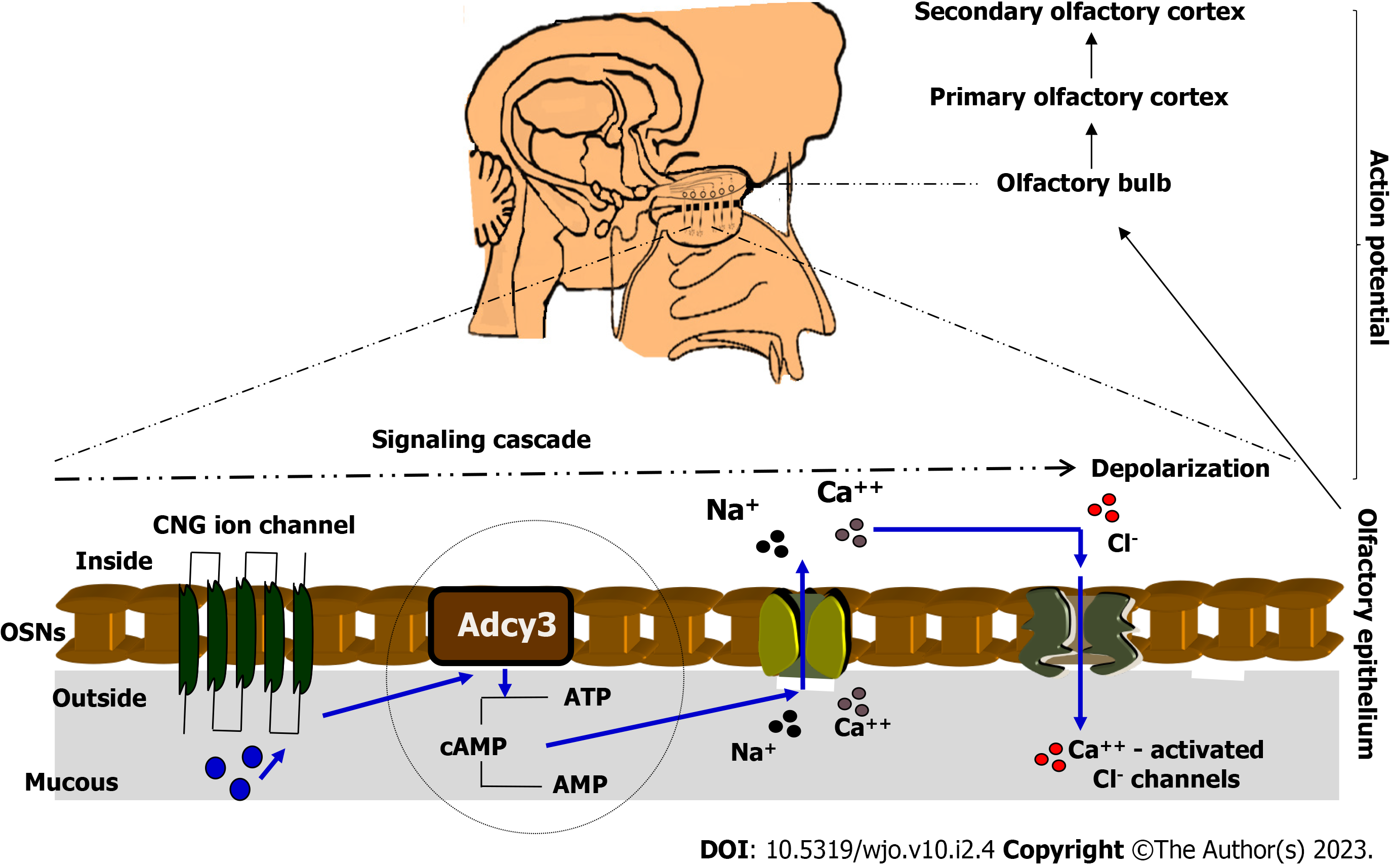Copyright
©The Author(s) 2023.
World J Otorhinolaryngol. May 9, 2023; 10(2): 4-22
Published online May 9, 2023. doi: 10.5319/wjo.v10.i2.4
Published online May 9, 2023. doi: 10.5319/wjo.v10.i2.4
Figure 3 The process of olfaction.
The signaling cascade which converts chemical information of the odorant into electrical information includes activation of cyclic nucleotide-gated ion channel followed by activated ADCY3 to convert ATP to cyclic adenine monophosphate (cAMP). cAMP unfolds Ca++ activated Cl- channels, causing influx of Na+ and Ca++ from outside to inside the olfactory sensory neurons, and this activates the Cl- channels, causing outflow of Cl-, neuronal membrane depolarization, and the action potential. The latter extends from the epithelium to the bulb and then to the olfactory cortex.
- Citation: Hamed SA. Post-COVID-19 persistent olfactory, gustatory, and trigeminal chemosensory disorders: Definitions, mechanisms, and potential treatments. World J Otorhinolaryngol 2023; 10(2): 4-22
- URL: https://www.wjgnet.com/2218-6247/full/v10/i2/4.htm
- DOI: https://dx.doi.org/10.5319/wjo.v10.i2.4









